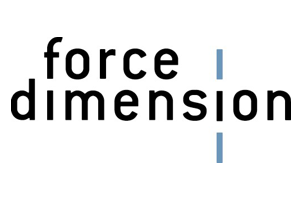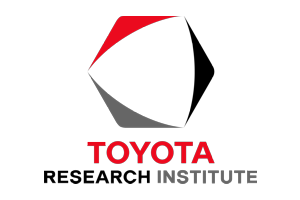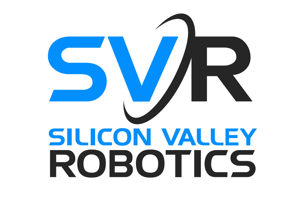Plenary Talks
 |
Wednesday, December 14, 8:30am Simulation and Optimal Control with Soft-Contact Dynamics
Emo Todorov
|
Abstract: Trajectory optimization has recently solved a range of complex control problems involving multiple contacts and rich whole-body dynamics. Some of these methods have already been deployed on physical robots. Nevertheless, each success story is the result of intense research effort which is hard to replicate and build upon. In this talk I will discuss progress towards an algorithmic and software framework aiming to transform trajectory optimization from a research topic into a reliable tool. The key component is a new model of soft-contact dynamics which reduces to unconstrained convex optimization. It also has uniquely defined inverse dynamics, enabling faster and more robust methods for feature-based control as well as trajectory optimization. The simulator, optimizer and associated machinery for cost function design are implemented and jointly fine-tuned in MuJoCo, resulting in a self-contained framework for model-based control.
Bio: Emo Todorov obtained his PhD in Cognitive Neuroscience from MIT in 1998. Since then he has worked as Postdoctoral Felow in the Gatsby Computational Neuroscience Unit at UCL, Research Scientist in Biomedical Engineering at USC, Assistant Professor in Cognitive Science at UCSD, and is now Associate Professor in Applied Mathematics and Computer Science & Engineering at UW. He is generally interested in intelligent control of complex systems, in both engineering and biology. His current focus is autonomous robot control through high-performance numerical optimization. He is also the founder of Roboti LLC and developer of the MuJoCo physics simulator.
 |
Thursday, December 15, 8:30am Closing the Reality Gap in Robot Simulation Using Machine Learning
Erwin Coumans
|
Abstract: Machine Learning is making great progress in speech and image recognition, machine translation and there is potential beyond computing in areas such as art and music and robotics. This talk discusses early steps in the journey going from traditional model-based physics simulation and system identification for robotics towards the use of machine learning.
Bio: Erwin Coumans is creator of the Bullet physics simulation engine and member of the Google Brain team, where he is responsible for real-time physics simulation research and development, with a focus on robotics and machine learning. After his study of Computer Science at Eindhoven University in the Netherlands, he has been involved in geometric collision detection and physics based simulation research for Guerrilla Games in the Netherlands, Havok in Ireland, Sony Computer Entertainment US R&D, Advanced Micro Devices and Google Robotics in California, USA. Erwin is a regular speaker at conferences related to Multibody Dynamics Simulation, Robotics, Visual Effects and Video Games and is co-author of the book Multithreading for Visual Effects. His work is integrated in various 3d modeling and simulation tools and is used by many professional visual effect studios, roboticists and game companies. Erwin received a Scientific and Technical Academy Award (Oscar) for the development of Bullet Physics in 2015.
 |
Friday, December 16, 8:30am Experimental Human-Centered Robots
Luis Sentis
|
Abstract: As new embedded systems and machine design methods are devised, the number of actuators and sensors on robots steadily increases. These new generation of robots are required to blend around with humans, achieve tasks quickly, and guarantee safety. One question that arises is what computational control and planning schemes are needed for such high dimensional systems. In this talk, I will first discuss motion planning methods to achieve agile, robust and versatile locomotion capabilities. In particular, I will discuss methods based on robustly tracking a set of non-periodic keyframe states. Formulating the invariance properties and distance metrics of phase-space planners I will describe how to achieve robust dynamic locomotion under external disturbances. I will then discuss the implementation of these approaches into highly dynamic biped robots and describe experimentation procedures to walk without supports. I will proceed to describe challenges on the design of high performance series elastic actuators. These type of actuators are ideal for human-robot interaction due to their passive compliant properties. I will present the design of the UT-SEA and how my laboratory leveraged it to design the NASA Valkyrie humanoid robot. Finally, I will discuss our activities on commercializing high-performance actuators and humanoid robots for the aerospace and service branches under the umbrella of Apptronik Systems Inc.
Bio: Luis Sentis is an Associate Professor in the Department of Aerospace Engineering at the University of Texas at Austin, and a contractor for NASA Johnson Space Center. He received his Ph.D. and M.S. degrees in Electrical Engineering from Stanford University where he was also a Postdoctoral Fellow in the Computer Science Department. He was a La Caixa Foundation Fellow while at Stanford. He holds a B.S. (Honors Thesis) degree in Telecommunications and Electronics Engineering from the Polytechnic University of Catalonia (UPC). Before Stanford, he worked in Silicon Valley as a Control Systems Engineer where he led R&D projects and designed software for industrial robots. In Austin, he leads the Human Centered Robotics Laboratory, an experimental laboratory focusing on control and embodiment of humanoid robots. He was the UT Austin's Lead for DARPA's Robotics Challenge with NASA Johnson Space Center where he helped to design and test the Valkyrie humanoid robot. His research focuses on realtime optimal control of human centered robots, motion planning for dynamic locomotion, designing high performance series elastic actuators, devising methods to guarantee safe physical human-robot interactions, and designing software systems for mobile manipulation. His research has been funded by NASA, the Office of Naval Research, NSF, DARPA, and private companies. More recently, he was awarded the NASA Elite Team Award for his contributions to NASA’s Johnson Space Center Software Robotics and Simulation Division. He is also co-founder and scientific advisor of Apptronik Systems Inc., a company focusing on human-centered robotic systems and high performance actuators.
















